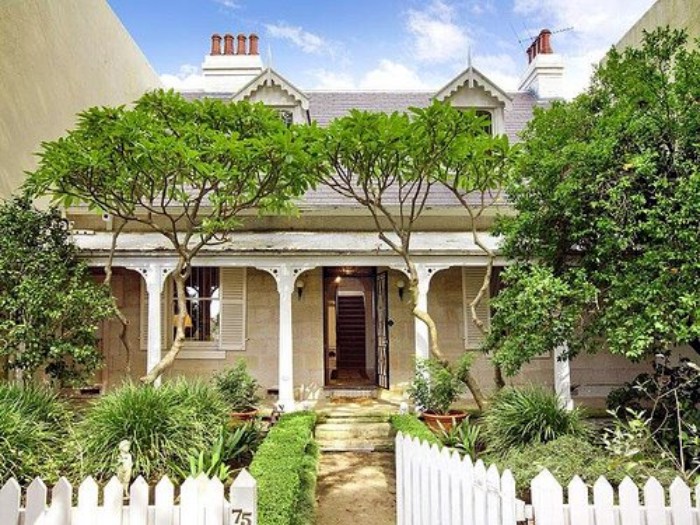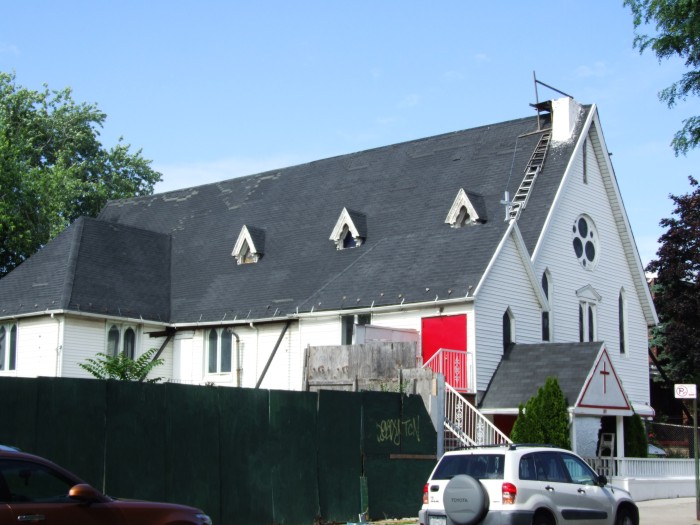Walkabout: Betrayed by a Common Hammer
I’m taking some time off this week, and have been reposting stories from my early days on Brownstoner, often with new information and/or pictures. I hope you enjoy this story, if you are reading it for the first time. It appeared in 2010, and is a fascinating tale of devious shenanigans and astute police work…


I’m taking some time off this week, and have been reposting stories from my early days on Brownstoner, often with new information and/or pictures. I hope you enjoy this story, if you are reading it for the first time. It appeared in 2010, and is a fascinating tale of devious shenanigans and astute police work in the old Eastern District.
I spend a great deal of time digging through the archives of the Brooklyn Daily Eagle, and every once in a while, in the search of something else, I’ll come upon a fascinating story completely unrelated to what I was searching for. These stories help make history come alive, and flesh out the thousands of people who built and bought the houses and businesses, attended school and church, and walked Brooklyn’s streets. Today’s tale of Brooklyn life involves what looks to be the ideal upscale family, living in a comfortable suburban neighborhood. But they were something else, altogether.
The year is 1878, and the suburb is the Eastern District of Brooklyn, specifically a home on the dividing line between the Eastern and Western Brooklyn Districts; Patchen Avenue, in what is now the eastern end of Bedford Stuyvesant. The house at 152 Jefferson Street, at Patchen, was built as a suburban summer home for a retired merchant named Wade. In the center of an oversized plot of land Mr. Wade built a summer retreat, surrounded by banks of shrubbery and flowers.
This is well before the rows of brownstones and other row houses would be built in this area. Before he went away to Europe, the owner placed the house and grounds for rent, and the real estate broker found a tenant in Wall Street broker George Lake and his family. On August 28, 1878, Acting Police Captain Dunn of the 9th Sub-Precinct on Gates Avenue raided the house and arrested Mr. and Mrs Lake, her sister, and two gentlemen visitors, who soon found themselves the guests in cells on Gates Avenue.
It seems that Mr. and Mrs. Lake presented themselves to the realtor as the ideal renters of the property. Mr. Lake was a handsome, portly man who said he worked on Wall Street, and wanted the home for a summer residence. He had no problem with the $100/month rent for the house, a large sum for the time. His wife was a beautiful brunette with striking features and impeccable manners and comportment, according to witnesses. She dressed in mourning clothing of obvious richness. She made an excellent impression, along with her husband, and they were soon in possession of the palatial home.
According to witnesses, they refurnished the house from top to bottom, and laid out a croquet game and hammocks on the great lawn, where they could be seen playing the game with great exuberance, or relaxing in their hammocks. They were usually accompanied by Mrs. Lake’s sister, and a man who was said to be her fiance. Everything looked perfect, and for a while it was. The women picked flowers from their garden and gave them to local children, and were pleasant to the neighbors. Local merchants were enchanted by the Lakes, as they spent lavishly and paid their bills on time, and were always pleasant and easy to deal with. They rarely had visitors, but seemed to be the perfect family, happy and carefree. When they were arrested and the truth came out, everyone said just what they say now: “It can’t be, they were so nice, the perfect neighbors and clients”.
But Captain Dunn of the police knew better. George Lake was not a Wall Street banker. His real name was Jimmy Porter, a notorious bank robber and safe cracker. The finance was another notorious criminal, Johnnie Irving, the lifelong friend and partner in crime of Jimmy Porter. The wife was indeed Jimmy Porter’s legal wife, but the sister was actually not her sister, but her sister-in-law, and Porter’s sister. The ladies were experts at fencing and laundering the money and merchandise stolen by the men. “George Lake” was seen by a patrolman buying a sledge hammer in a hardware store on Broadway.
That’s what set the ball rolling. Why would a well-dressed wealthy man buy a sledgehammer? That was the kind of thing you sent a servant to do, and the Lakes had servants, so what was up? It was odd enough an occurrence that the patrolman followed the man to the house and watched him enter. But due to the sterling reputation of the Lakes, the incident was not investigated further.
But a couple of days later, Captain Dunn himself happened to see George Lake and his friend leave the house, and he recognized them as the notorious Jimmy Porter and Johnnie Irving. The pieces were coming together, and Captain Dunn had a detective watch the house from the steeple of the Episcopal Church directly across the street from the house. They watched the house for several nights, “when respectable people were in their houses”, and noticed that the lights would stay on well into the night. That week, a local store, called Ibert’s Food and Grain was broken into and robbed, the contents of the safe stolen.
One night two men were seen going into 152 Jefferson at an extremely late hour, and the police took the opportunity to raid the house. Inside, they found Porter and Irving, two other men, the two women and a female servant. They also found $800 in cash, the loose drawers from a safe, some jewelry and silks, and some checks. All of those items were listed as stolen from Ibert’s during the robbery. The men were arrested, and the women were placed under police surveillance. Back at the station house, they were questioned by Robert Pinkerton and two detectives. Porter and Irving were dressed as gentlemen, but the other two men were in rough laborer’s clothing, suspicious enough right there. It turned out that one was “Shang” Draper, the “king of the panel thieves”, wanted for a bank robbery in Massachusetts, and for robberies in the 8th Ward of Manhattan. The other man was eventually identified as James Mills of Chicago.
Found in the house was the loot from several other Brooklyn robberies. $4,000 worth of silk from Brooklyn’s Batterman Store on Broadway, as well as jewelry from another store robbery, two years before, at Gunther’s of Fulton Street. They found goods from Lewis’, and Porter and Throburn’s Dry Goods Shops. They also found locks and bolts which the police believed were used to practice for the real jobs. The reporter who logged this story got to go into the house itself, and he praised “Mrs. Lake’s “refinement and décor.” The house was filled with expensive, yet tasteful furniture, musical instruments, and bric-a-brac, with the latest in carpeting and furnishings.
Apparently the two accomplices were not allowed to stay in the house, and when the police raided the house, they were found asleep in one of the several outhouses on the grounds. Everyone else was seated at the dining room table, and only Johnnie Irving tried to run, and was grabbed climbing out of a window. Apparently he had a history of escapes, and in fact, he and Porter would escape from the Raymond Street Jail, following this arrest. Ten years later, Irving would die, shot in a bar room brawl on 6th Avenue. Porter would still be serving a jail sentence in Massachusetts. Shang Draper was out on the street, but James Mills would die in a Connecticut jail.
Both Porter and Irving were implicated in, but never charged with the death of a fellow bank robber named George Howard. He was friends of theirs, and Howard’s wife was a particular friend of Mrs. Porter. George Howard’s body was found in the woods outside of Yonkers in 1878, but there was never enough evidence to tie the men to the actual murder. It is not known what happened to Mrs. Porter or her sister-in-law, or if they were ever charged with any crime.
The house at 152 Jefferson was called the “Thieves’ Home” for years afterward, which so detracted buyers or renters that the house would remain empty for years, with only two temporary, short term tenants. In 1887, a Catholic clergyman took up residence there, and the Daily Eagle hoped that “his holy calling may serve to cleanse the house and grounds of the impurities and sins of its former occupants and place it again on the catalogue of Brooklyn’s desirable homes.” That would not last long, as row houses were built on that block by the late 1890’s. Today, there is no trace of the Thieves’ Home, although St. Stephen’s Episcopal Church, now without its steeple, still stands across the street. At least for now. The congregation is trying to raise money for a new church. But that is another story for another time. GMAP
(Photo:Desiretoinspire.com. This is NOT the house in the story)






What's Your Take? Leave a Comment